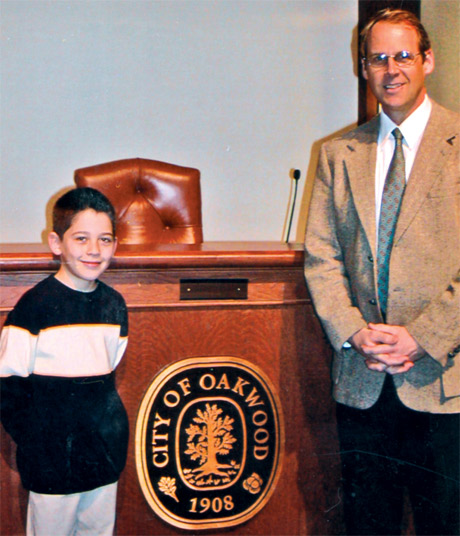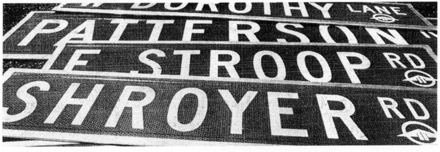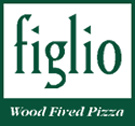UD professor headed to Radford University
Longtime Oakwood resident Brian Conniff, a professor, author and scholar, has been named Radford University’s new Dean of the College of Humanities and Behavioral Sciences.
Conniff, whose position at RU is effective July 1, will be leaving a position at the University of Dayton to take a job at RU. Conniff has been a Professor of English and has served as Chair of the Department of English for the past eight years. Over his career at the University of Dayton, Conniff has served as President of the Academic Senate, Chair of the Academic Affairs Committee for the College of Arts and Sciences, and on the Provost’s Council. According to RU, Conniff also has a strong history of community involvement, “working extensively in the community as co-founder of the Dayton Literacy Project and a founding member of the steering committee for the Dayton Literary Peace Prize.”
Conniff earned his B.A. in psychology from Rutgers University, his M.A. in English from the University of Scranton, and his Ph.D in English from the University of Notre Dame.
Conniff is the author of a book on modern poetry and is currently completing a book on race, morality,and the law in contemporary American prison writing. He has published research on American, British, irish and Latin American literature, as well as literacy, service learning, and higher education.
Dollars for Daybreak
During the 2007-2008 academic school year all employees at the OHS/OJHS building were invited to pay a dollar for each Friday they wanted to wear jeans to school. The program was called Dollars for Denim and it was our way as a group to work together for our community. As a staff they voted on a local charity to donate all of their “dollars” to and selected Daybreak. Daybreak is an emergency shelter for runaway and homeless youth in the Dayton area. 67 staff members contributed dollars throughout the school year and the group raised a total of $1702. All of the dollars will be donated to Daybreak.
City manager makes Japanese magazine
Oakwood City Manager Norbert Klopsch is now getting international coverage. Klopsch was featured in an article in the 2008 spring issue of Pukupuku (translated as Sounds of Happiness), a monthly out of Fukutsu, Japan. The article spoke of a young man from Oakwood, Christoph Cikraji, who brought his own layout and drawings of what he thought Orchardly Park should look like to the city building and had a meeting with Klopsch. The article noted that young people in the U.S. have far more access to authorities than their counterparts in Japan.
The origins of Oakwood’s street names
First of all. we should realize that Oakwood isn’t our own private name. There are three towns in Ohio with that name. In the minutes of March 5, 1909’ the Village Council registered no objection to using “Oakwood Hills” for postal addresses. As early as 1912, the Dayton Postmaster was sending messages to The Oakwood Record requesting that residents use the Rural Route 12, Dayton, Ohio for their address. Using Oakwood as an address may get your letter sent to Paulding County near Toledo or to Cuyahoga County outside of Cleveland. In 1960, the Dayton Postmaster wrote The K-O Times that they were getting 12 or more letters a day that were missent. ZIP Codes and optical scanning have put an end to the problem. In 1913 the Village Council was asked by a resident to consider establishing a numbering system to identify houses. A report from an employee in 1914 resulted in the adoption of a plan which started at the north border – Irving & Springhouse – increasing south block by block, just as it does today. Unplatted areas continued to use the Rural Route designation until platted and houses were built. The custom of naming residences had already come into vogue and many of the west side homes had adopted names in a kind of code which they used in correspondence, news articles, invitations and letterheads which continued in directories into the 20’s. I won’t bore you with the list of 50 such names, but think of John H. Patterson’s “The Far Hills’” Harry and Katherine Talbott’s “Runnymede,” H.E. Parrott’s “Briar Hill,” and even the Wright brothers’ “Hawthorn Hill.” Some of these name still appear on impressive stone markers at the entrances of properties. Street names are a curiosity to everyone whether they are natives or not. If you can spell them you can find them with a map or a Garman GPS. Some are obviously based on builders and developers and prominent families such as Shafor or Schantz or Patterson. Others have obscure origins.
The original Plat of Oakwood in 1872 named the street through the When we talked about the Parrotts who purchase the big “L” shaped parcel adjacent to the original plat, we noted that the street through their parcel was originally called Forrer Road, named for Henrietta’s grandmother. Later it was chopped into Oakwood Avenue and Forrer Road. At the north end of the Parrott tract was a little connecting street which ran from Oakwood Avenue to Runnymede Road which was called Katherine Street, undoubtedly for Katherine Houk Talbott, owner of “Runnymede.” William Kramer had a large farm which he developed into a winery and “pleasure gardens” in the late 1800’s and is now part of the Dayton Country Club. The street facing this enterprise has retained the name Kramer Road. The early descriptions of the Ridgeway Road/Oakwood Avenue intersection refer to John H. Patterson Boulevard, apparently nixed by Patterson. Many references to what we know as Ridgeway Road call it Panorama Rd. The access to Far Hills Avenue from Ridgeway designated as Shaw Road is now Grandon Road. Park Road was known for many years as Young Road until Patterson widened it. The one block street we know as Thornhill was designated Willowgrove as part of a plan to connect it to West Schantz Avenue, but was abandoned when John H. gave Community Golf Course to the city of Dayton. So it was renamed Thornhill in 1919. The Adam Schantz Estate developed its “Place to Live” with names from their beloved Florida, like Volusia, Sorrento and Orlando Terrace and from such local historical landmarks as Stonemill, Sawmill, and Springhouse. The Acorn Homes Plat and the Shafor Oakwood Second Plat established the north/south road through them as Fauver for the original farm through which it ran. This was changed to Hathaway Rd. to prevent confusion with the Fauver Ave. in Belmont. The name Ravenwood was give to what is now East Thruston Blvd. from the top of the hill by the Lutheran Church, down to Acorn Drive until 1973 when it was changed to East Thruston. The Wonderly family, as told in an earlier article, provided the names of two streets when one of the daughters platted her third of the farm into Wonderly and Claranna, the latter being a combination of Clarence and Anna Neibel. Another was changed by Dayton from Irwin St. to Irving Avenue. The connecting block between Oakwood Avenue and Far Hills Avenue originally known as South Street became E. Schantz Avenue when platted by Adam Schantz II. Of course, the toll road designations of “The State Road” changed to Brown Street, now Oakwood Avenue, and “Great Miami Pike” and “ Cincinnati Pike” to W. Schantz Avenue, and “Lebanon Pike” to Far Hills Avenue are well established historical facts. As noted in Oakwood:The Far Hills, (p. 43) the Village Council in 1925 corrected the spelling of several names which inadvertently had crept into the original plats such as: Thurston to Thruston, Rubican to Rubicon, Runnymeade to Runnymede, and Harmon to Harman. (Incidentally, Thruston is pronounced Throoston not Thrust-on.) Other name and spelling changes have been made through the years such as Walter Shafor’s changes in his 1913 Park Hill Plat of “Camden Place” to E. Dixon and “Wistaria” to “Wisteria.” Click for more Centennial News >
|
![]()
June 24, 2008
Volume 17, No. 26
front page
arts
schools
sports
editorial
'round town
people
events
obituaries
The
|
Call |



 Centennial
Centennial 



